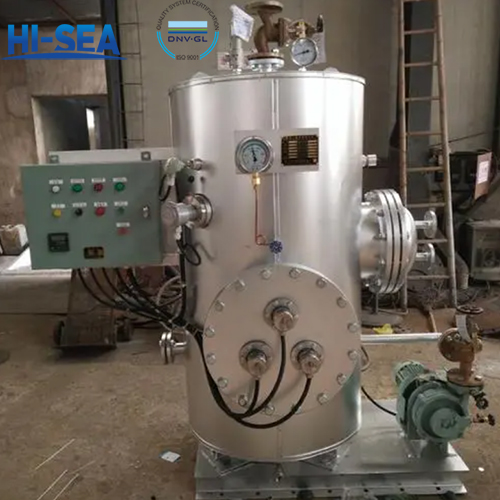
Maintenance of Marine Calorifier
Marine calorifiers are an important equipment on ships.
It is mainly used for storing and supplying hot water to meet the daily life and work needs of the crew on board.
Marine calorifiers are usually made of corrosion-resistant materials such as stainless steel and have good heat preservation performance to reduce heat loss and maintain the temperature of hot water.
The working principle is generally that through the ship's heating system, such as the utilization of waste heat from the main engine, fuel or electric heating, the water is heated and then stored in the calorifier.
On some larger ships, multiple calorifiers may be equipped to meet the hot water needs of different areas or different purposes.
This article will introduce to you Maintenance of Marine Calorifier.
As a professional supplier of marine equipment, we have rich project experience and aim to provide you with excellent solutions. If you have relevant purchasing needs or questions, please contact us! Email <hs10@cqhisea.com>
Overview
The maintenance of marine calorifiers is of crucial importance. The following are some common maintenance key points and methods:
Regular inspection:
Appearance inspection: Check whether the shell of the hot water cabinet shows signs of corrosion, deformation or damage.
Inspection of connection parts: Ensure that there are no leaks at the pipe connections, valves, etc.
Cleaning work:
Internal cleaning: Regularly drain the water in the hot water cabinet and remove sediments and impurities inside to prevent the accumulation of scale and dirt.
External cleaning: Wipe the shell to keep its surface clean, which helps to detect corrosion and other problems in time.
Maintenance of heating elements and heat exchangers:
Electric heating elements: Check the working status of the resistance wire or heating tube for any open circuit or short circuit phenomenon.
Heat exchangers for steam or fuel heating: Check for blockages, carbon deposits, etc., and clean them if necessary.
Safety valves and pressure controllers:
Calibration of safety valves: Ensure that it can open normally at the set pressure to release excessive pressure and ensure the safety of the equipment.
Check the pressure controller: Ensure that it accurately senses pressure changes and controls the heating process.
Inspection of insulation layer:
Check whether the insulation material is intact, and whether there is any damage or detachment to ensure a good insulation effect and reduce heat loss.
Water quality management:
Monitoring water quality: Regularly test indicators such as water hardness and pH value, and conduct water treatment if necessary to prevent scaling and corrosion.
Regular maintenance:
Conduct comprehensive maintenance according to the equipment manufacturer's recommendations, including replacing wearing parts and lubricating moving parts.
For example, if slight corrosion is found on the shell of the hot water cabinet, grinding and repainting treatment should be carried out in time; if the safety valve fails the calibration, it should be replaced in time to avoid potential dangers. Another example is that when the water quality is too hard, a water softener device can be installed or scale remover can be added regularly to improve the water quality and extend the service life of the hot water cabinet.
Conclusion
The above is the entire content of this article. In the article, we have detailedly introduced to you how to choose the most suitable Marine calorifier. We hope that through this article, it can help you choose the marine calorifier.
Finally, if you have the need for procurement, you are welcome to visit our marine calorifier homepage or contact us at any time! Thank you again for your browsing!





